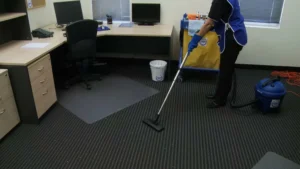The Evolution of Surgical Equipments in Saudi Arabia
Saudi Arabia is experiencing a significant transformation in its healthcare sector, and at the heart of this transformation lies the advancement of surgical equipment. From humble beginnings to cutting-edge technologies, the evolution of surgical tools has been a cornerstone of the Kingdom’s drive to improve medical care. This development has not only enhanced the quality of surgeries but also expanded access to life-saving treatments across the country.
In this article, we’ll explore how Surgical Equipments in Saudi Arabia have evolved, the factors driving this change, and the impact it’s having on healthcare outcomes.
The Early Stages of Surgical Equipment in Saudi Arabia
The Kingdom of Saudi Arabia, like many other nations, began its modern healthcare journey with basic surgical tools and limited medical infrastructure. Early surgeries were often performed with rudimentary equipment, leading to a high risk of complications and longer recovery times. While the country’s oil wealth allowed for investments in healthcare infrastructure, it took time to build the sophisticated system we see today.
Government Initiatives and Investments in Healthcare
One of the driving forces behind the advancement of surgical equipments in Saudi Arabia has been the government’s proactive approach to healthcare. Initiatives like Vision 2030, which aims to diversify the economy and reduce dependency on oil, place a strong emphasis on modernizing healthcare services. This includes upgrading hospitals, training medical professionals, and importing the latest medical technology. These efforts have laid the groundwork for a healthcare revolution, where cutting-edge surgical tools are now a key part of medical treatments.
Technological Advancements in Surgical Equipments
The advancements in surgical equipment in Saudi Arabia reflect a global trend toward more precise, less invasive surgeries. Among the most significant developments are:
- Laparoscopic Tools: Minimally invasive surgery has become a cornerstone of modern healthcare. Laparoscopic tools allow surgeons to perform operations with smaller incisions, reducing recovery times and the risk of infections.
- Robotic-Assisted Surgery: The introduction of robotic systems like the Da Vinci surgical robot has revolutionized complex procedures, allowing for greater precision and control during surgeries.
- 3D Printing in Surgery: 3D printing technology is being used to create customized implants and surgical models, making complex surgeries more accurate and tailored to the patient’s anatomy.
- AI-Driven Surgical Tools: Artificial intelligence is playing an increasing role in Saudi Arabia’s healthcare sector. AI-powered diagnostic tools and surgical robots are helping to enhance accuracy, reduce human error, and improve patient outcomes.
Impact on Patient Care and Outcomes
The evolution of Surgical Equipments in Saudi Arabia has had a direct impact on the quality of patient care. Modern equipment allows for quicker, more accurate procedures, which translates into faster recovery times, fewer complications, and improved survival rates. For example, the use of laparoscopic tools in general surgeries has significantly reduced hospital stays, allowing patients to return to their daily lives sooner.
Furthermore, the introduction of robotic-assisted surgeries has enabled Saudi surgeons to perform complex operations that were previously impossible or highly risky. These technologies not only improve the patient’s quality of life but also boost the confidence of healthcare professionals, knowing they have access to the best tools available.
Training and Skill Development
The successful integration of advanced surgical equipment relies on well-trained medical professionals. Saudi Arabia has made significant investments in educating its healthcare workforce. Specialized training programs, both locally and internationally, ensure that Saudi surgeons and medical staff are equipped with the skills needed to use modern surgical tools effectively. Collaborations with leading medical institutions around the world have facilitated knowledge transfer, keeping Saudi healthcare professionals on the cutting edge of medical science.
The Role of International Partnerships
Saudi Arabia’s leap in medical technology and surgical tools wouldn’t have been possible without the help of international partnerships. Collaborations with global healthcare providers, medical technology companies, and research institutions have enabled the Kingdom to import the latest equipment and techniques. These partnerships are crucial in ensuring that Saudi Arabia remains at the forefront of surgical innovation.
Expanding Access to Surgical Care
One of the most critical aspects of this medical leap is the expanded access to surgical care. In the past, only a few major cities in Saudi Arabia had the facilities and equipment necessary for advanced surgeries. Today, thanks to government investments and technological advancements, state-of-the-art surgical tools are being deployed across the country. This expansion means that people in more remote areas now have access to life-saving procedures without having to travel long distances.
Mobile surgical units, equipped with advanced tools, are also being utilized to reach patients in rural areas. This mobile approach ensures that every citizen, regardless of location, has access to the best possible care.
Success Stories: Real-Life Impact of Advanced Surgical Equipments
The impact of surgical equipments in Saudi Arabia can be seen in real-life success stories. For example, the introduction of robotic surgery has allowed for breakthroughs in fields like cardiology and oncology. Patients who once faced high-risk surgeries now benefit from less invasive, robot-assisted procedures that are not only safer but also more effective. In many cases, recovery times have been halved, and the risk of complications drastically reduced.
Challenges in the Adoption of Advanced Surgical Equipments
While the progress in surgical equipments in Saudi Arabia is impressive, challenges remain. High costs, the need for continuous training, and ensuring equitable access to these advanced tools are issues that need to be addressed. Not all hospitals have the resources to adopt the latest technology, and ongoing investments in infrastructure are required to keep pace with the rapid advancements in medical technology.
The Future of Surgical Equipments in Saudi Arabia
Looking ahead, the future of surgical equipments in Saudi Arabia is bright. The country is expected to continue investing in new technologies such as AI, machine learning, and advanced robotics. These innovations will further enhance the precision and effectiveness of surgeries, leading to even better patient outcomes. Moreover, Saudi Arabia’s healthcare system is likely to become a model for other countries in the region, demonstrating the importance of investing in modern medical technologies.
As the Kingdom moves closer to realizing its Vision 2030 goals, healthcare will remain a priority. The continued evolution of surgical tools will ensure that Saudi Arabia is well-prepared to tackle the healthcare challenges of the future.
Conclusion
The evolution of surgical equipments in Saudi Arabia marks a significant leap forward in the country’s healthcare system. From basic tools to advanced robotic systems, these innovations have transformed how surgeries are performed, improving patient outcomes and expanding access to life-saving treatments. As the Kingdom continues to invest in healthcare technology, the future looks promising, with new advancements set to revolutionize the field further.














Post Comment